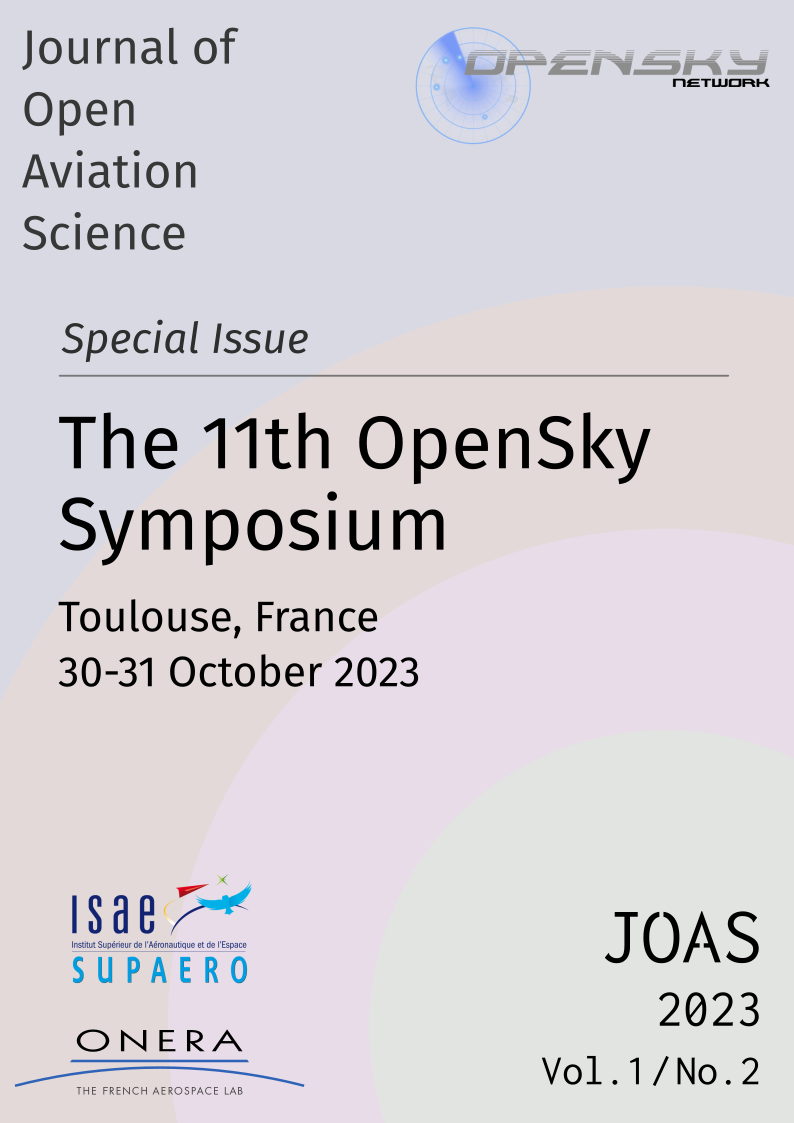[Poster] Spatial modelling of midair collision risk using ADS-B data
DOI:
https://doi.org/10.59490/joas.2023.7202Keywords:
geospatial model, airspace environment modelling, midair collision risk, air traffic dataAbstract
The airspace environment is a complex system that is only expected to continue increasing in complexity with the introduction of new types of air vehicles and operations, such as uncrewed aircraft, and the projected growth of air traffic volumes. This increase in complexity brings a need for investigating and developing new models of complex airspace environments to better understand their constituent parts. To address this need, this paper presents a methodology to create a geospatial model of complex airspace environments which can be used to study any geospatially distributed entity part of these environments. The methodology leverages Discrete Global Grid Systems (DGGS) for this purpose, a Geographic Information Systems framework previously utilized in geography and urban planning. The usefulness of the model is demonstrated on a case study geospatial entity which is the risk of midair collisions for many geospatially distributed points in an airspace region of interest. Since such a model needs to be able to work for any type of air vehicle and airspace region in a fully three-dimensional model that is capable of performing time varying analysis in a computationally efficient manner, a rudimentary midair collision risk model was also developed which satisfies these requirements. Air traffic data from the OpenSky Network was collected and integrated in the geospatial model and the midair collision risk model was used to calculate the risk of collisions for many geospatially distributed points in the airspace for four scenarios of ascending airspace complexity. The results from these four scenarios showed that the proposed methodology can be used to study the risk of midair collisions for different points in the airspace for any type of air vehicle and airspace region of interest in a fully three-dimensional model that is capable of performing time varying analysis in a computationally efficient manner.Metrics
Metrics Loading ...
Downloads
Published
2023-10-31
How to Cite
Vincent-Boulay, N., & Marsden, C. (2023). [Poster] Spatial modelling of midair collision risk using ADS-B data. Journal of Open Aviation Science, 1(2). https://doi.org/10.59490/joas.2023.7202
Issue
Section
Conference - Posters
License
Copyright (c) 2023 Nicolas Vincent-Boulay, Catharine Marsden

This work is licensed under a Creative Commons Attribution 4.0 International License.


